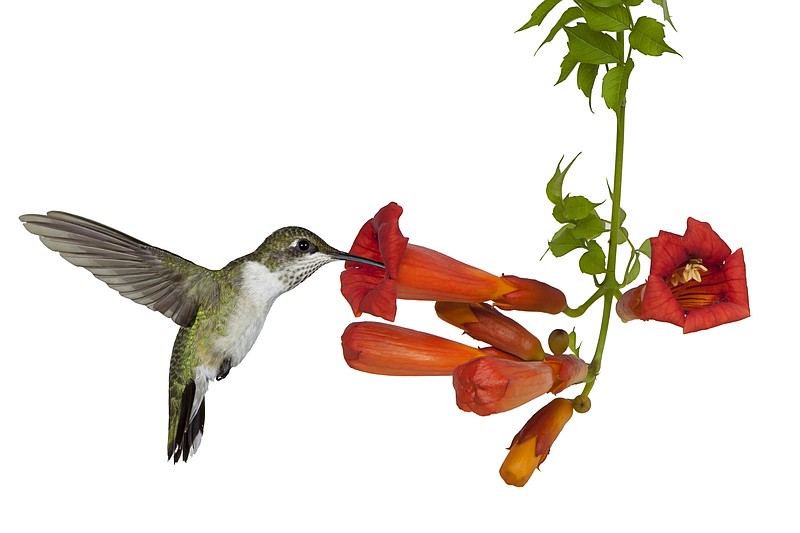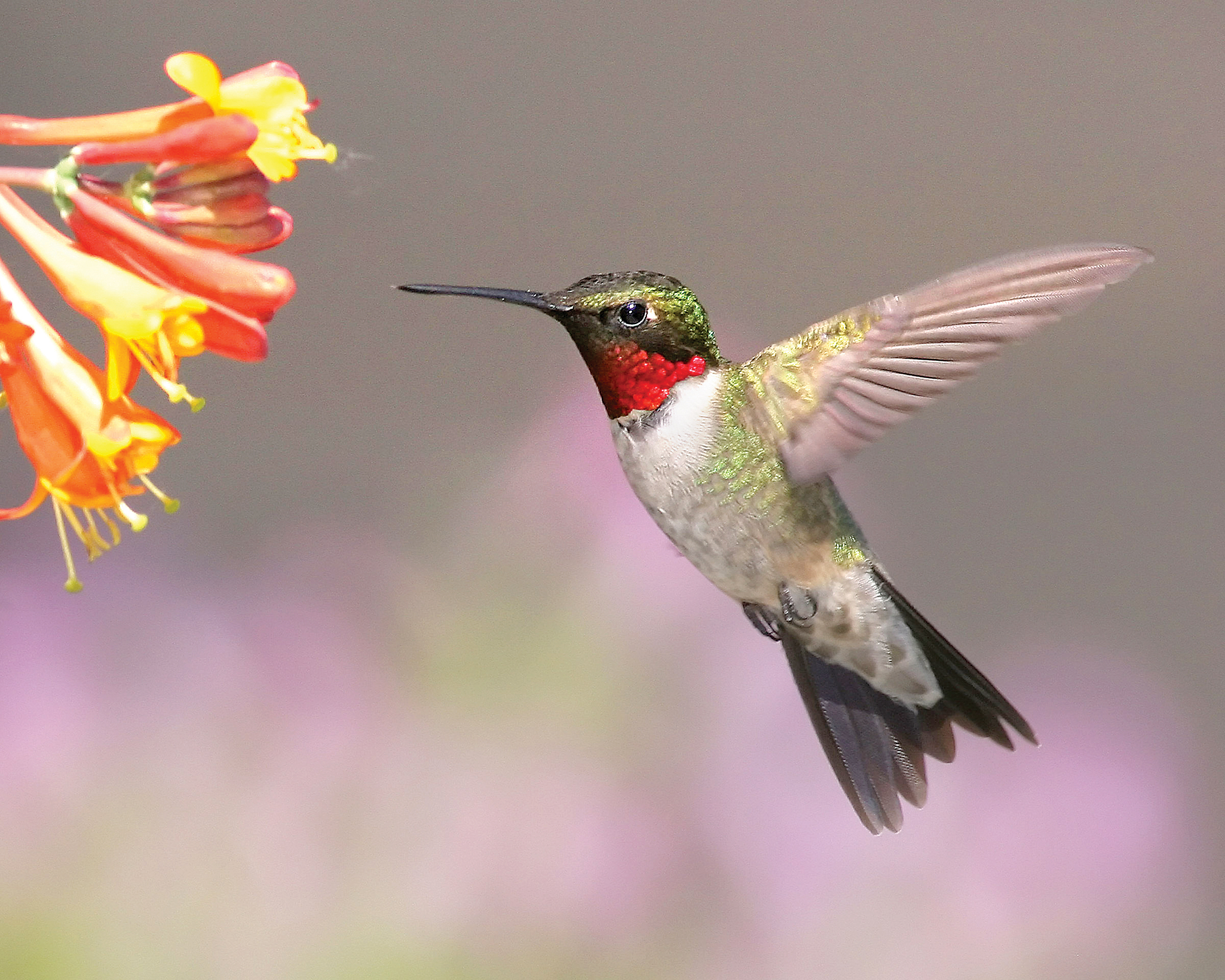By the time you can say the number 1,001, a hummingbird has flapped its wings at least 50 times.
That's according to Kevin Calhoon, Tennessee Aquarium's curator of forest, who describes the tiny birds as amazing, acrobatic animals.
They are the only bird able to fly backward, and they have brains that make up 4.2 percent of their body weight, proportionately the largest among birds. They remember the location of plants along their migration path and even the faces of people who regularly maintain bird feeders, according to sciencedaily.com
Some can fly greater than 33 miles per hour. They burst with color and they can be frequent fliers in your backyard if the setting and plant life are right.
That means: "If you have bird feeders, if you have lots of water, lots of pretty flowers, lots of flowering plants," says Calhoon.
Get ready
Calhoon says hummingbirds are already here. They left the tropics in March coming this way and started arriving in Tennessee around April. They usually stay until the end of September or October. The ruby-throated hummingbird is the most popular in this area.
Mel Vandergriff, manager of Chattanooga Wild Birds Unlimited on East Brainerd Road, says local residents may occasionally see rufous hummingbirds in the fall.
According to beautyofbirds.com, it's easy to confuse the rufous and ruby-throated because they have many similarities. The female birds have no color on their throats, but the males look spectacular. The ruby-throated hummingbird has a redder throat compared to the rufous' plumage, which is more red orange. The male ruby-throated also has a slightly forked tail, not pointed like with the rufous hummingbird.
"They build a little tiny nest about the size of a pingpong ball, just a little tiny nest out of leaves and spider webs. They're really cool little tiny nests. And they have two little tiny eggs like Tic Tacs and jelly beans. It's a pretty cool thing to see because they're so tiny," says Calhoon.
These are Calhoon's and Vandergiff's tips for getting hummingbirds into your backyard.
Preparing the yard
Hummingbirds key in on red and orange flowers, so having a lot of orange and red flowers helps. Flowers in Tennessee commonly used for attracting hummingbirds include bee balm, red columbine, delphinium, butterfly bush, hollyhock and rose of Sharon. The list also includes Catawba rhododendron, trumpet vine or cardinal vine.
Calhoon suggests planting petunias.
And not all of the flowers have to be red, says Vandergriff.
"They're lots of different flowers that will attract them. It's not just red," he says. "They're attracted to blues and pinks and oranges."
Hummingbirds like water, but not too much because they're so small. A shallow bird bath would be perfect, says Calhoon.
They also like sprinklers, says Vandergriff.
Hummingbird feeders are also good.
You'll probably see more feeding in July after the spring mating season is over and the juvenile birds join the adults around the feeders. August and September are also good months because they start congregating before they migrate in the fall. They know it's time to migrate when the days get shorter. They can fly from the United States to Central America during their yearly migration without a break.
Cats and hummingbirds won't exist in the same yard, says Calhoun. And bees also can drive hummingbirds away.
You need a blend of sun and shade for them to be happy. They'll want to perch and nest in the shade. The feeder can be in the sun, says Vandergriff.
He suggests staying away from yellow because they attract more bees.
He adds that hummingbird swings are popular. If you hang it in the shade near the feeder, that's where they'll perch so you can really get a good look at them.
Feeders should be bright red or purple. Vandergriff says he prefers a dish type of feeder instead of a gravity feeder. The gravity feeder is more decorative, but any time you have a gravity feeder, you've got an air pocket at the top. It could force the feed out onto the ground, which can attract bees. If you get too many bees, the hummingbirds won't come, he says. With the saucer type, you won't have that problem.
Contact Yolanda Putman at yputman@timesfreepress.com or 423-757-6431.

